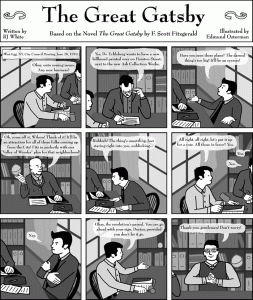| Performance Indicators
P.S. ELA-1 Language: Demonstrate command of the conventions of Standard English grammar and usage when writing or speaking. A. Notice and correct grammatical and mechanical errors in writing. P.S ELA-2 Reading Analysis: Cite strong and thorough textual evidence to support analysis of what the text says explicitly as well as inferences drawn from the text, including determining where the text leaves matters uncertain. A. Evaluate the relevant themes and synthesize how they are present in the novel in oral and written responses. P.S ELA-3 Reading Craft and Structure: Determine an author’s point of view or purpose in a text in which the rhetoric is particularly effective, analyzing how style and content contribute to the power, persuasiveness or beauty of a text. A. Understand SOAPSTone: Speaker, Occasion, Audience, Purpose, Subject, Tone |
One of the focuses of literature in the junior year is to learn to recognize symbolism in a work and to determine how that imagery influences our understanding of the story’s meaning. Make a list of the various possible symbols that you determine to appear in The Great Gatsby. Indicate what you feel the symbols may represent relative to the story. What, based on your interpretation, is the significant theme to the story?




